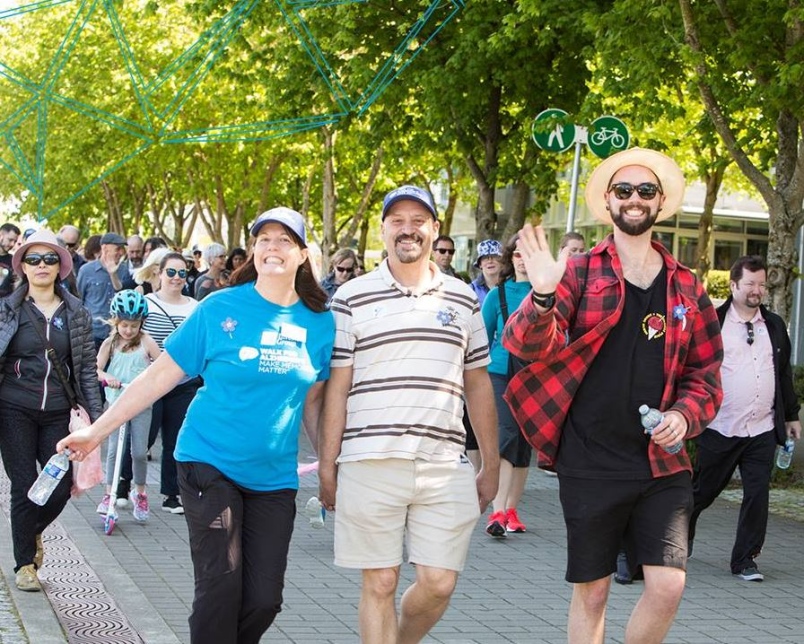Dig for the story, believe in the story: the Alzheimer Society of B.C.
You’re a fundraising organization and you’d like to draw attention to the events you’ve organized.
This won’t be easy.
If anything makes media yawn, it’s another charity doing another walk to raise money.
Whether that makes sense or is simply callous, it’s a fact. It’s exactly what happens in a newsroom – they get pitched pretty much every day about those sorts of initiatives, and are often invited to write about the event based on, frankly, uninspiring hooks.
There are so many of them, it’s understandable so many get deleted. It’s hard to tell one from another. And the excuse for not biting is an easy one: “We get these pitches every single day. If we’re going to say yes to one, we’re going to have to say yes to all of them.”
Look, you and I both know that’s not true. Media doesn’t have to say yes to all of them. But they’ll say yes if — and here’s the big if — there are compelling stories to tell.
So when our longtime client, the Alzheimer Society of B.C., asked us to pitch the 2018 Investors Group Walk for Alzheimer’s – 23 fundraising walks around the province on May 6 – we couldn’t help but feel challenged. The society planned to honour longtime volunteers, or others who’ve been impacted by Alzheimer’s, at each site. If you think charity events are a tough thing to pitch, how about volunteerism? In both cases, absolutely worthy. In both cases, media usually shrugs.
How, then, did we do it? By investing time. Effort. Delving into the subject. Getting to know people. And becoming emotionally involved with our client’s story.
The society wanted us to pitch Michele Buchignani and her parents, Reg and Sally. They were, no doubt, keen and experienced volunteers. Reg’s mother had had Alzheimer’s. Reg came to the society for help, for guidance. And 30 years later, he’s still giving his time. So is Michele, who’s had her boots on the ground as a volunteer as well as being the past chair of the board of directors.
We knew we needed more than the volunteer angle. So we invited Michele to Peak’s offices one Friday afternoon. We sat her down and said: “Tell us about your grandma. Take us back to when she was healthy. What was she like?” And just like that, Michele brought her grandma back to life. It was really something: funny in places, sad in others. Mary Buchignani was a strong woman of tremendous character and personality – and then she wasn’t. Michele learned a lot, watching her grandma’s long struggle with Alzheimer’s. It led to her getting involved, becoming an advocate.
After an hour in our boardroom, we knew we had at least one great story. We had someone with lived experience who had the personal story, but also could deliver the key messages – the walks, the fundraising, the need for increased awareness about and support for people with Alzheimer’s and their loved ones – in succinct and effective ways. Listening to Michele, we knew she would make a compelling TV or radio talk show guest.
From there, our task was simple: Sell Michele. And determine what the other best stories were. We had a planner from the City of New Westminster who’s not only been working on New West becoming B.C.’s first dementia-friendly community but also has a father who was recently diagnosed with Alzheimer’s; a couple who’ve had a long life together, filled with affection and love, and the disease won’t steal those things from them; and a 69-year-old woman, several years into her diagnosis, who decided she wanted to go skydiving. Fantastic stories of different types. All meaningful. All human.
We went into this project knowing it would be a challenge. But when we take on a project, we always find a way to get media results. It’s where Peak has earned its reputation. So we landed the major media, from the Vancouver Sun to Global TV to CBC Radio and CKNW. And the regional media, who told those powerful stories about people who live in their area. We had a client in the Alzheimer Society of B.C. that was passionate and communicative and positive, and we were able to help successfully convey their chief messages time and time again.
When it was all over, the event was behind us and we all knew so much more about Alzheimer’s, we were able to say to the client: We can keep getting you, and the work you’re doing, attention. And we don’t need the walk to do it.

